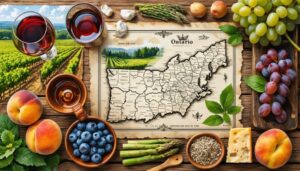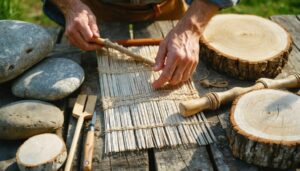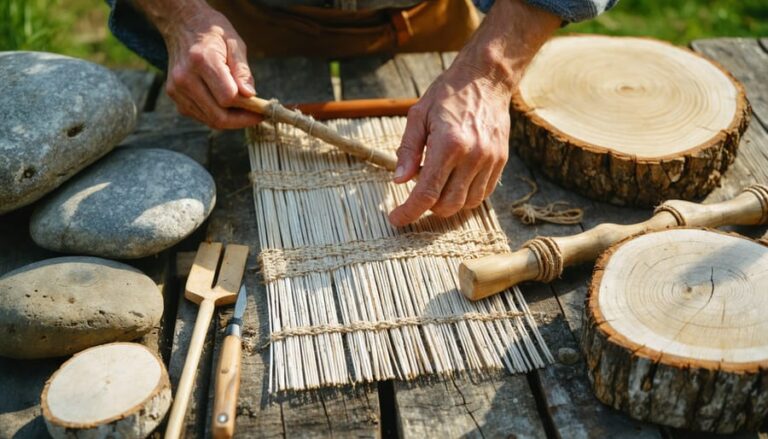Trace your ancestral footsteps through Ontario’s rich historical tapestry, where every small-town church, century-old farmhouse, and restored village tells a story of those who came before. Heritage travel transforms ordinary vacations into deeply personal journeys of discovery, connecting modern-day explorers with their roots in ways no standard tourist experience can match.
Picture yourself walking the same cobblestone streets your great-grandparents once traversed, or standing before the very pier where your ancestors first stepped onto Canadian soil. These aren’t just places on a map – they’re chapters of your family’s story waiting to be rediscovered.
In Ontario, heritage travel goes beyond genealogy research and old photographs. It’s about immersing yourself in living history: sampling traditional recipes passed down through generations, learning forgotten crafts in restored workshops, and connecting with local communities who keep ancestral traditions alive.
Whether you’re exploring the preserved Victorian architecture of Niagara-on-the-Lake, tracing Indigenous heritage trails, or discovering your family’s roots in the agricultural heartland, Ontario offers countless opportunities to walk in your ancestors’ footsteps while creating your own legacy of memories.
Welcome to a journey that’s both a step back in time and a leap forward in understanding who you are and where you come from.
Ontario’s Rich Cultural Tapestry
Indigenous Heritage Sites
Ontario’s Indigenous heritage sites offer profound insights into the rich cultures and traditions that have shaped this land for thousands of years. At Petroglyphs Provincial Park, you’ll discover Canada’s largest known concentration of Indigenous rock carvings, where ancient teachings come alive through intricate stone artwork. Known as “The Teaching Rocks,” these sacred carvings provide glimpses into spiritual and cultural practices that continue to resonate today.
In Midland, the Huronia Museum and Huron/Wendat Village recreates a 17th-century Indigenous settlement, complete with longhouses and traditional artifacts. Guided tours led by Indigenous interpreters share stories of daily life, traditional ceremonies, and the deep connection to the land that persists in modern Indigenous communities.
For an immersive experience, visit Manitoulin Island, the world’s largest freshwater island and home to several First Nations communities. Here, you can participate in authentic cultural experiences, from smudging ceremonies to traditional crafting workshops. The Great Spirit Circle Trail offers guided tours that combine storytelling with hands-on activities, providing visitors with meaningful connections to Indigenous heritage while supporting local communities.
Remember to approach these sites with respect and an open mind, as they’re not just tourist attractions but living cultural spaces that continue to hold deep significance for Indigenous peoples.
Colonial Heritage Routes
Step back in time as you explore Ontario’s rich colonial heritage along well-preserved historical routes. Fort York in Toronto stands as a testament to early British military presence, where you can watch historical reenactments and explore original 18th-century buildings. In Kingston, Fort Henry offers an immersive experience of 19th-century military life, complete with garrison parades and sunset ceremonies.
The charming town of Niagara-on-the-Lake preserves its colonial architecture beautifully, with horse-drawn carriages still clip-clopping down streets lined with Georgian and Victorian buildings. Don’t miss the Fort George National Historic Site, where costumed interpreters bring the War of 1812 to life.
In eastern Ontario, Upper Canada Village near Morrisburg offers a living history experience of 1860s life. Watch craftspeople work with period-accurate tools, smell fresh-baked bread from the village bakery, and even take a ride on a horse-drawn wagon.
Insider tip: Visit these sites during shoulder season (spring or fall) to avoid crowds and catch special heritage events. Many locations offer evening lantern tours, providing a magical glimpse into colonial nightlife.

Must-Visit Heritage Destinations
Historic Towns and Districts
Ontario’s historic districts and towns offer windows into the province’s rich past, where heritage buildings and cobblestone streets tell stories of early settlers, industrial boom times, and cultural evolution. In Niagara-on-the-Lake, elegant Victorian architecture and well-preserved 19th-century storefronts transport visitors to the colonial era, while its horse-drawn carriages add extra charm to the experience.
The Distillery District in Toronto stands as North America’s largest collection of Victorian industrial architecture, transformed into a vibrant cultural hub. Wander through its pedestrian-only lanes, where former whiskey distillery buildings now house artisan shops, galleries, and restaurants – perfect for both history buffs and culture enthusiasts.
Kingston’s limestone buildings and historic fortifications showcase its role as Canada’s first capital, while Cobourg’s Victoria Hall and heritage homes reflect the grandeur of its 19th-century summer resort status. For a unique experience, visit Perth’s heritage downtown, where local guides share tales of the area’s military settlements and early Scottish influence.
Insider tip: Visit these historic districts during shoulder season (spring or fall) to avoid crowds and enjoy more intimate interactions with local historians and shop owners. Many towns offer early morning heritage walking tours, providing the perfect opportunity to photograph historic buildings in soft morning light before the day’s visitors arrive.
Remember to respect these living museums – many buildings still serve as homes and businesses, continuing their historic legacy into the modern era.

Cultural Museums and Centers
Ontario’s rich cultural tapestry comes alive in its diverse museums and cultural centers, where history isn’t just preserved—it’s celebrated daily. The Royal Ontario Museum (ROM) in Toronto stands as a crown jewel, featuring extensive Indigenous collections and interactive exhibits that tell the story of our province’s earliest inhabitants alongside natural history displays.
For a deep dive into Indigenous heritage, the Woodland Cultural Centre in Brantford offers powerful insights into the residential school system and celebrates Indigenous art, language, and traditions. The site includes the former Mohawk Institute Residential School, now transformed into an educational center where visitors can learn about this challenging chapter of our history.
In Ottawa, the Canadian Museum of History provides a comprehensive look at our nation’s past, with special emphasis on Ontario’s role in confederation. The museum’s Grand Hall, with its impressive collection of totem poles and Aboriginal artifacts, is particularly memorable. These are just a few of our accessible heritage sites that welcome visitors year-round.
Local tip: Many of these institutions offer free admission during specific times, usually Wednesday evenings or the first Thursday of each month. Consider timing your visit accordingly, and don’t forget to check out their rotating special exhibitions, which often showcase unique aspects of Ontario’s heritage not found in permanent collections.

Heritage Festivals and Events
Ontario comes alive through its vibrant heritage festivals and events, where past meets present in spectacular celebrations of our diverse cultural tapestry. Every summer, the Fergus Scottish Festival and Highland Games transforms the quiet town into a thrilling showcase of Celtic traditions, complete with caber tossing, pipe bands, and Highland dancing that’ll transport you straight to the Scottish Highlands.
In Toronto’s Historic Distillery District, the annual Christmas Market recreates the magic of European winter festivals, with local artisans, traditional carolers, and the aroma of mulled wine filling the Victorian-era streets. For a taste of Indigenous culture, the Summer Solstice Indigenous Festival in Ottawa offers immersive experiences with traditional ceremonies, pow wows, and craft workshops.
Don’t miss the Upper Canada Village’s Medieval Festival, where historical reenactors bring the Middle Ages to life through authentic combat demonstrations, period music, and traditional crafts. The Welland Heritage Festival celebrates the region’s canal-building history with boat tours, street performances, and local food vendors sharing stories of the area’s industrial past.
Insider tip: Many festivals offer early-bird tickets with significant savings, and some even provide free admission during certain hours. Consider visiting during preview nights or soft openings for a more intimate experience with smaller crowds. Remember to bring reusable water bottles and shopping bags to help keep these historic celebrations eco-friendly for future generations.
Planning Your Heritage Journey
Best Times to Visit
When planning your heritage journey, timing can make all the difference. The best times to visit Ontario heritage sites vary depending on what you’re hoping to experience. Summer (June to August) brings warm weather and extended hours at most historical sites, plus vibrant cultural festivals celebrating our diverse heritage. Fall offers spectacular colors surrounding historic buildings and less crowded conditions at popular attractions.
Many heritage sites host special events during significant holidays and commemoration dates. Victoria Day weekend in May kicks off the summer season at many historical sites, while Doors Open Ontario events throughout the year provide rare access to normally restricted heritage buildings. Indigenous cultural celebrations peak during the summer solstice, offering authentic experiences and traditional ceremonies.
For photography enthusiasts, early morning or late afternoon visits provide the best lighting for capturing historic architecture. Winter visits to heritage sites offer unique charm, especially during holiday seasons when many locations feature period decorations and traditional celebrations, though some outdoor sites may have limited access.
Pro tip: Check individual site calendars for special events and reenactments that can add an extra layer of authenticity to your heritage experience.
Eco-Friendly Heritage Tourism
When exploring Ontario’s heritage sites, it’s crucial to practice responsible tourism that preserves these treasures for future generations. Following sustainable tourism practices not only protects historical sites but enhances your experience by creating a deeper connection with the places you visit.
Consider using public transportation or joining guided walking tours when exploring urban heritage districts. Many historic sites in Toronto, Kingston, and Ottawa offer excellent public transit access, reducing your carbon footprint while avoiding parking hassles. If you’re visiting rural heritage sites, try carpooling or booking eco-friendly tour operators who use hybrid vehicles.
Pack reusable water bottles and shopping bags when visiting heritage markets and craft fairs. Many historic sites now offer water refill stations, and local artisans appreciate visitors who bring their own bags for purchases. Speaking of shopping, prioritize locally-made souvenirs and crafts that support heritage artisans and traditional craftsmanship.
Photography enthusiasts should stick to designated paths and viewing areas to prevent erosion at historic sites. When visiting heritage gardens or grounds, respect plant life and wildlife by maintaining a safe distance and never removing natural specimens or artifacts.
Consider staying at heritage hotels and B&Bs that have implemented green initiatives. Many historic properties across Ontario have beautifully balanced preservation with eco-friendly upgrades like solar panels, water conservation systems, and organic gardens.
Remember to support heritage sites that actively engage in conservation efforts. Look for properties certified by sustainable tourism organizations or those that reinvest admission fees into preservation projects. Your thoughtful choices help ensure these precious landmarks remain vibrant for generations to come.
Local Insider Tips
Hidden Gems
Beyond the well-trodden paths of Ontario’s famous historical sites lie hidden treasures waiting to be discovered. These lesser-known heritage spots offer authentic local cultural experiences without the crowds.
Consider visiting the Wellington County Museum, housed in a former poorhouse with compelling stories of 19th-century social welfare. The building’s Gothic Revival architecture and peaceful gardens make it a photographer’s dream. In Thunder Bay, the hidden gem of the Finnish Labour Temple offers fascinating insights into the region’s Finnish heritage and labor history, complete with a traditional Finnish restaurant in the basement.
For nature lovers, the petroglyphs at Petroglyphs Provincial Park near Peterborough showcase Indigenous rock carvings in a serene forest setting. Known as “The Teaching Rocks,” these sacred sites tell stories that date back over a millennium.
Don’t miss the charming Sharon Temple in East Gwillimbury, an architectural marvel built by the Children of Peace in the 1800s. Its unique design and peaceful grounds transport visitors to a different era. In Kingston’s Portsmouth Village, wander through preserved limestone buildings and discover the untold stories of one of Ontario’s oldest communities.
Pro tip: Visit these sites during shoulder season (spring or fall) when you can often get personal tours from passionate local historians who have time to share detailed stories and hidden facts about these remarkable places.
Cultural Etiquette
When visiting heritage sites, showing respect for the cultural significance of these places enriches both your experience and helps preserve these treasures for future generations. Always check photography policies before taking pictures, as some sacred sites and artifacts may have restrictions. Keep your voice low, especially in places of worship or ceremonial grounds, and follow posted guidelines about touching artifacts or structures.
If you’re visiting Indigenous sites or participating in cultural experiences, take time to learn about proper protocols. Many Indigenous communities welcome visitors but appreciate when guests show understanding of their customs. When attending ceremonies or celebrations, dress modestly and ask permission before participating or recording.
For historical buildings and museums, stick to designated pathways and avoid touching displays unless explicitly permitted. Many heritage sites in Ontario offer guided tours – these are fantastic opportunities to learn proper etiquette while gaining deeper insights into the location’s significance.
Remember that many heritage sites are still active places of worship or cultural practice. Time your visits appropriately and be mindful of ongoing ceremonies or events. Consider making a donation to support site preservation, and always leave places exactly as you found them.
Pro tip: Before visiting any heritage site, spend a few minutes researching specific customs or protocols. Many locations have this information readily available on their websites or visitor guides, helping you prepare for a respectful and meaningful visit.
Heritage travel in Ontario offers more than just a glimpse into the past – it’s an enriching journey that connects us with our roots and shapes our understanding of who we are today. From the historic streets of Kingston to the preserved Indigenous sites across the province, each destination tells a unique story of the diverse cultures that have shaped Ontario. By exploring these cultural landmarks, we not only honor our shared history but also support the preservation of these invaluable sites for future generations. Whether you’re a history enthusiast or simply curious about your cultural heritage, Ontario’s rich tapestry of historical sites, museums, and cultural centers awaits your discovery. Start planning your heritage journey today – connect with your past, create lasting memories, and become part of Ontario’s continuing story. The perfect cultural adventure is just around the corner, waiting for you to write your own chapter in our province’s remarkable history.














+ There are no comments
Add yours